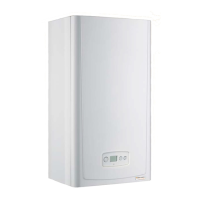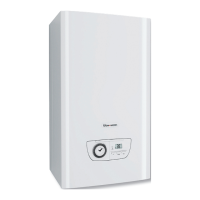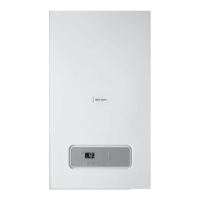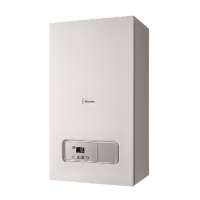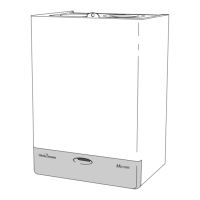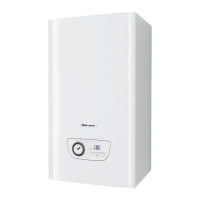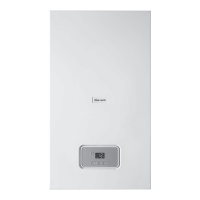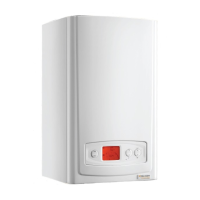8 Safety Discharge Valve & Condensate Connections
Diagram 8.1
12667
8.1 Safety Discharge Valve
The pipe from the safety discharge valve must not discharge
above an entrance, window or any type of public access area.
Take the safety discharge pipe, supplied in the pipe pack and
the union nut and seal, supplied in the loose items pack and
fit as shown in diagram 8.1.
This must be extended, using not less than 15mm o.d. pipe,
to discharge, in a visible position, outside the building, facing
downwards, preferably over a drain.
The pipe must have a continuous fall and be routed to a
position so that any discharge of water, possibly boiling,
or steam cannot create any danger to persons, damage to
property or external electrical components and wiring.
To ease future servicing it is advisable to use a compression
type fitting to extend the safety discharge valve tube.
8.2 Condensate Drain Connection
The condensate drain connection is at the rear of the boiler,
see diagram 7.4. A flexible condensate outlet pipe is supplied
loose in the base polystyrene packaging and should be used
to fit onto the drain connection, to discharge condensate to
a drain. The drain pipe 22mm to 25mm OD. non corrosive
plastic pipe should have a fall of at least 2.5
0
away from the
boiler.
Condensate should, if possible be discharged into the
household internal drainage system. If this is not practicable,
discharge can be allowed into the external household drains
or a purpose designed soak away, refer to diagram 8.2.
It is recommended that any external condensate drain pipe is
insulated and also preferably of 32mm diameter, to prevent
freezing in adverse weather conditions.
The condensate is discharged periodically in ‘slugs’ by
siphonic action.
It is not necessary to provide air breaks or extra traps in the
discharge pipe as there is already a trap inside the boiler.
Fitting an extra trap may cause the boiler siphon to work
incorrectly.
Refer to BS5546 or BS6798 for advice on disposal of boiler
condensate.
